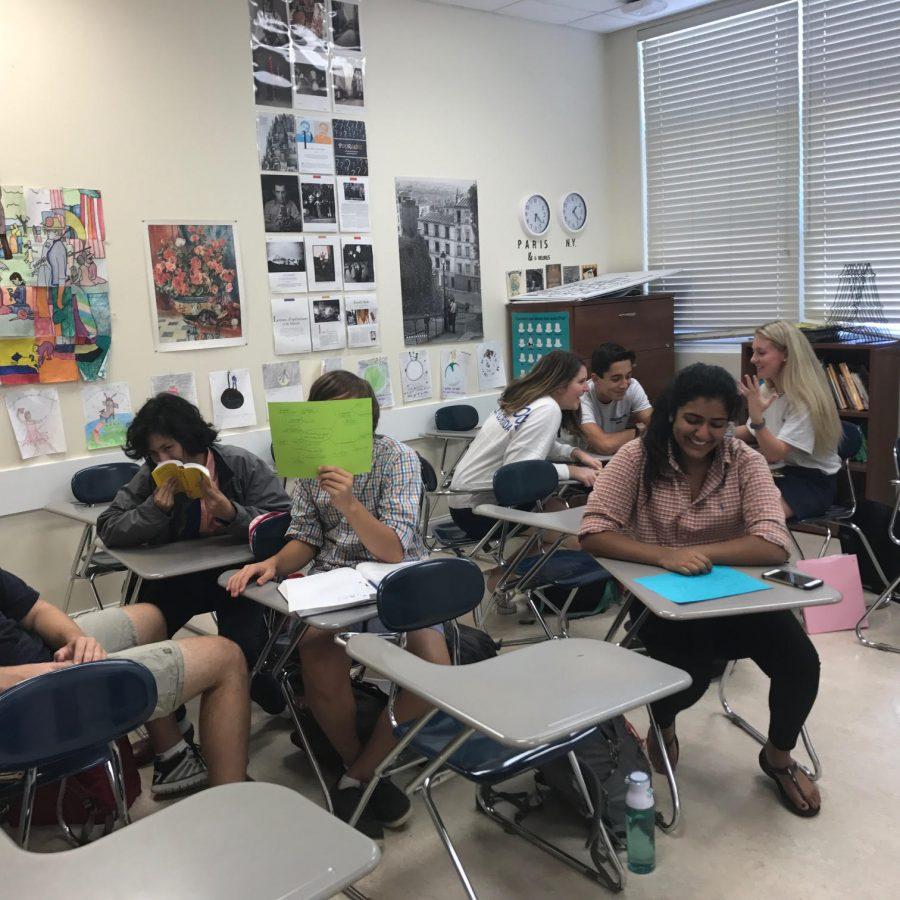Small, But Mighty
December 14, 2016
Desi Hambrock ‘17 is an AP student in the combined French class, as well as one of three AP 3-D art students in the combined 3-D art class. When asked about classroom learning, Desi mentioned, “I can tell a difference in the learning experience, and will definitely seek this type of class environment in college.” Hambrock also spoke of some advantages of small/combined classes, including ideas that “people of all levels can work together” and “students in lower level classes can be challenge by those in the upper level classes.”
“We learn while helping each other, not only from the teacher,” Desi mentioned.
Amidst neighboring high schools that have classes with upwards of thirty-five students, Bolles boasts small class sizes that both enhance the quality of the education and foster a sense of community among students. When you think of an average Bolles classroom, the number of students typically clocks in at around fifteen to twenty – though there are a few exceptions. And among these few exceptions are classes that are so small they cannot survive on their own – thus the creation of a “combined” class ensues.
For example, because there are only three students enrolled in AP French this year, the AP French class is combined with the nine other students that take French IV Honors. Though 8th period French with Ms. Brown meets the needs of both AP French and IV Honors, the total class size still remains small, at only 12 students.
When asked about teaching a combined class, Ms. Brown mentioned that “it can be challenging teaching a combined class, especially when the students are coming from different levels.”
To address these challenges, Ms. Brown “treats her combined class as 1.5 classes and strives to keep their activities and assignments uniform as it allows the 4H students to work with and learn from the AP students, and vice versa.”
Even though the class typically remains unified in classroom lessons and activities, Ms. Brown did mention that her “AP students are expected to produce more on essays and tests, and are graded harder than the students in honors.”
While French is not the only subject area that includes tiny or combined classes, the department and students are actively working to increase the number of students that pursue French studies. According to Ms. Brown, the department has been working “to promote and encourage friendships between students in various levels through the French Club in addition to the tutoring service they started offering this year.”
Despite perhaps a few qualms about having students of various levels in one class, Ms. Brown mentions that the class dynamic is “great and diverse. Everyone supports one another, which promotes a sense of unity.”
To take advantage of this special environment, she usually breaks students into three groups of four for a discussion led by each AP student. Students in both French IV Honors and French AP also often work together to coordinate and run French club activities.
Even though when you hear the term “combined class” you may think of fifty students shoved into a small classroom, most top out at fifteen students and still offer individualized attention. Though combined classes may pose some challenges, in the eyes of most students and teachers they earn an A+ for the teaching and learning environment that they allow.







